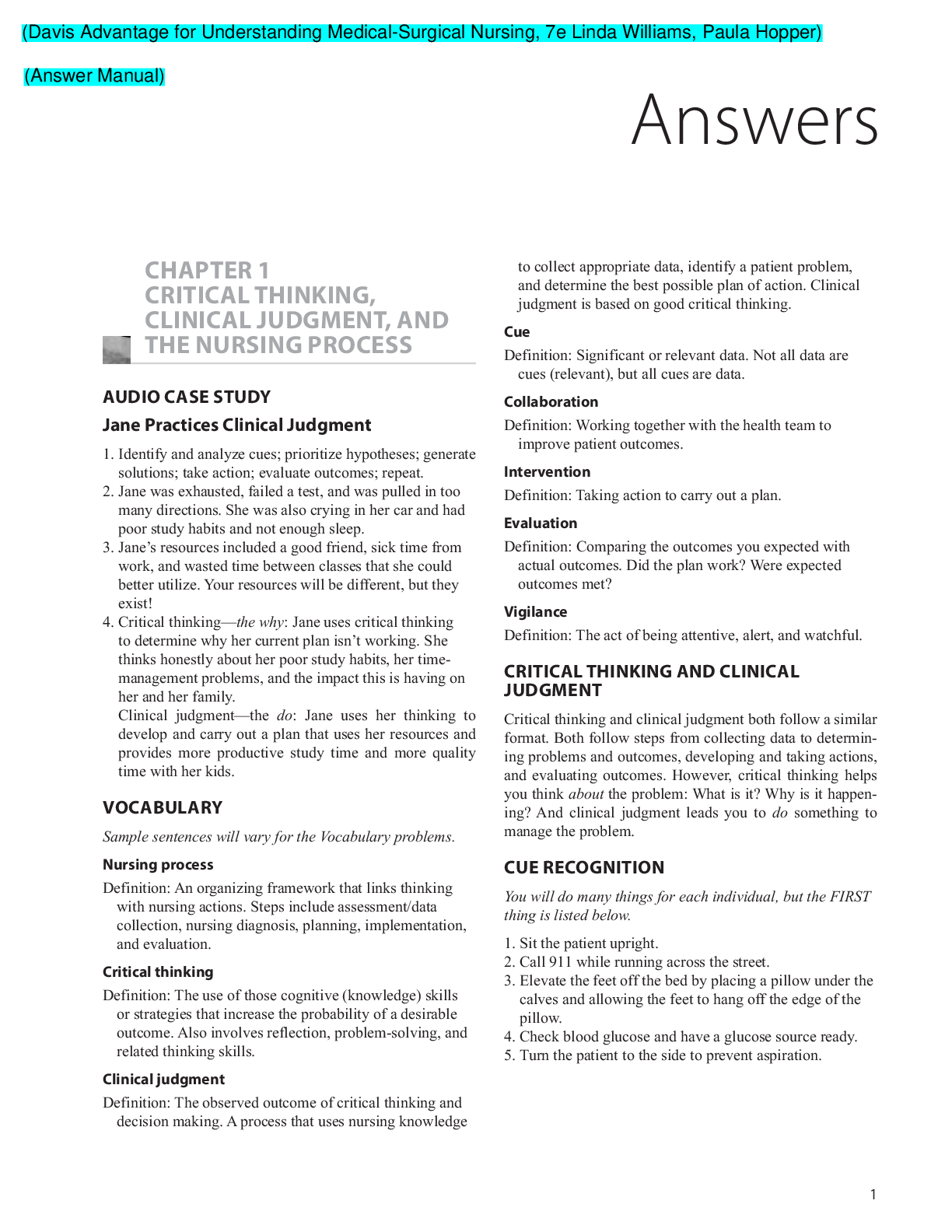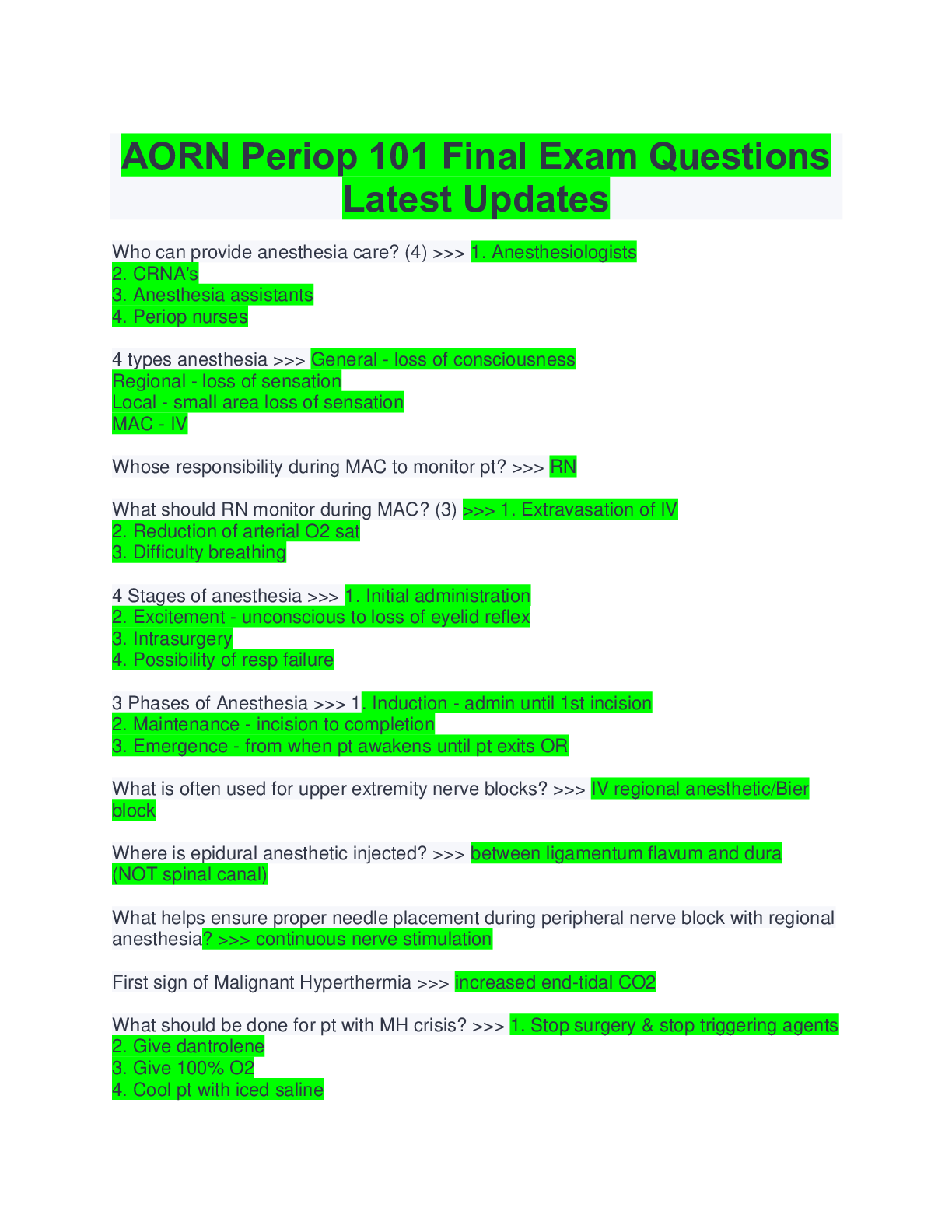Biology > QUESTIONS & ANSWERS > Arizona State University BIO 130 Intermediate Disturbance Hypothesis Lab Quiz (All)
Arizona State University BIO 130 Intermediate Disturbance Hypothesis Lab Quiz
Document Content and Description Below
• Question 1 When disturbances to an ecosystem are frequent, species who take a long time to grow and become established will dominate. True Fals e • Question 2 A high number for ... the Simpson's index of diversity indicates that there is a large diversity of species present in an ecosystem. Tru e Tru e • Question 3 Pre-lab reading: Fires are common disturbances in forests. Tru e Tru e • Question 4 From Exercise 1, question 4.1: Which of the following tree species is described as having suffered population declines that have likely resulted from acid pollution? Oak Sugar Maple Answer Feedback: Sugar Maple is the answer. • Question 5 From Exercise 1, question 4.2: Which of the following is/are described as potentially invasive or 'weedy'? Select all that apply. Answers: Blackberry Bushes Answers: Blackberry Bushes Stickywilly Response Feedback : Yes, if you read the introductory material about the different species, only blackberry bushes and stickywilly were described as potentially invasive, or "weedy." According to the reading about annuals in your lab "It should come as no surprise, then, that many annuals are invasive, weedy species. Take, for example, the stickywilly (Galium aparine), a wide-spread annual deriving its name from its sticky seeds..." • Question 6 From Exercise 1, question 9: What happened to the diversity value when you held the average # of fires/year constant at 0.2, but varied the chance of spread from 0.1 to 0.95? The diversity value decreased consistently as you went from a chance of spread of 0.1 to a value of 0.95. The diversity value increased from 0.1 to about 0.5, and then decreased as the chance of spread reached 0.95. Answer Feedback: The diversity value increased from 0.1 to about 0.5, and then decreased as the chance of spread reached 0.95. • Question 7 For Exercise 1, question 9.1: The fires caused the diversity index to decrease. True Fals e • Question 8 From Exercise 1, question 6.2: What was the diversity index when you stopped the simulation? around 2 around 2 Answer Feedback: . This is a relatively low index, indicating that just a few species (trees) dominate the system. • Question 9 From Exercise 1, question 6.1: The pattern of succession was grasses/annuals, followed by bushes/shrubs and then trees. Tru e Tru e • Question 10 From your lab pre-reading/introduction. The Simpson's diversity index value is higher when the number of species in a system is lower. Fals e Fals e [Show More]
Last updated: 1 year ago
Preview 1 out of 3 pages
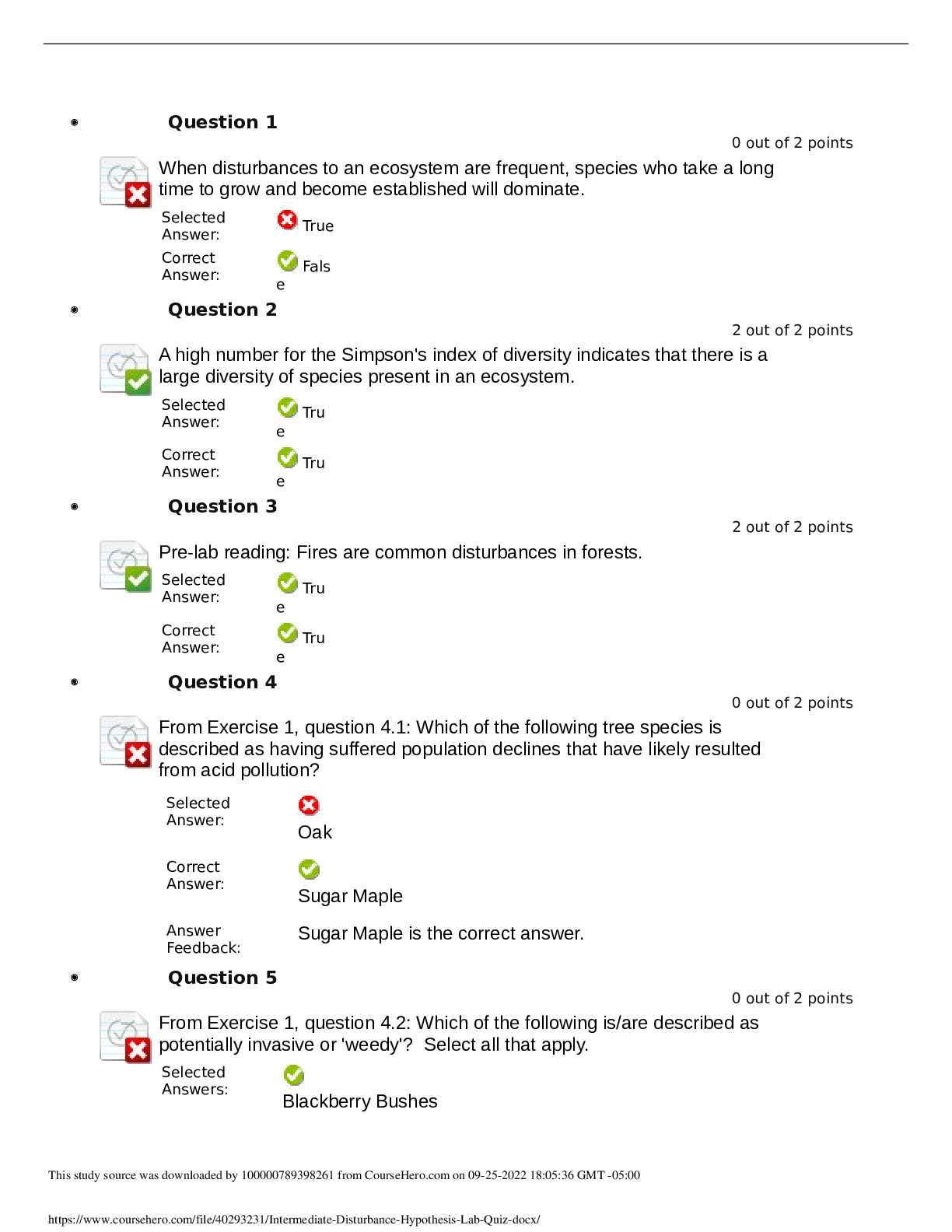
Reviews( 0 )
Document information
Connected school, study & course
About the document
Uploaded On
Sep 26, 2022
Number of pages
3
Written in
Additional information
This document has been written for:
Uploaded
Sep 26, 2022
Downloads
0
Views
110
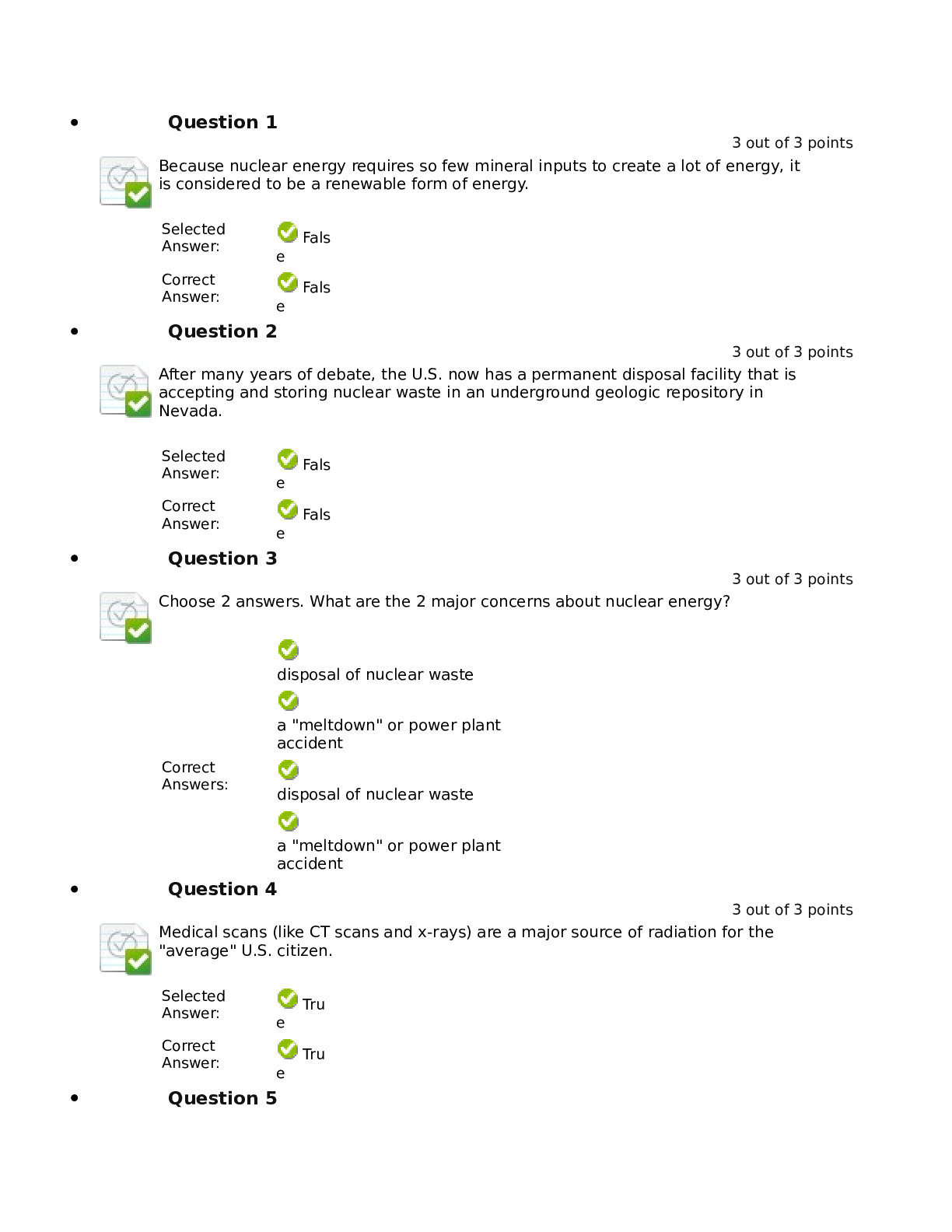





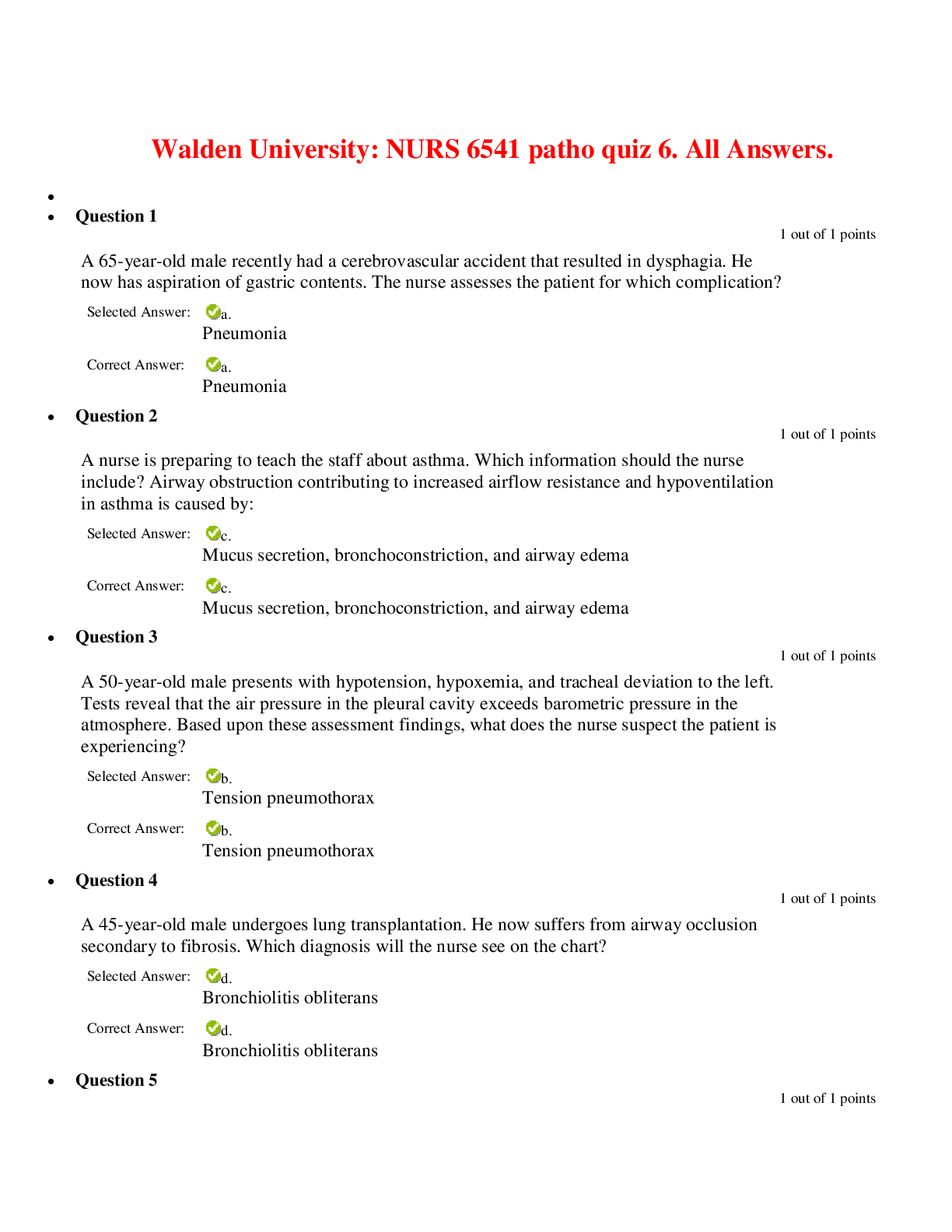






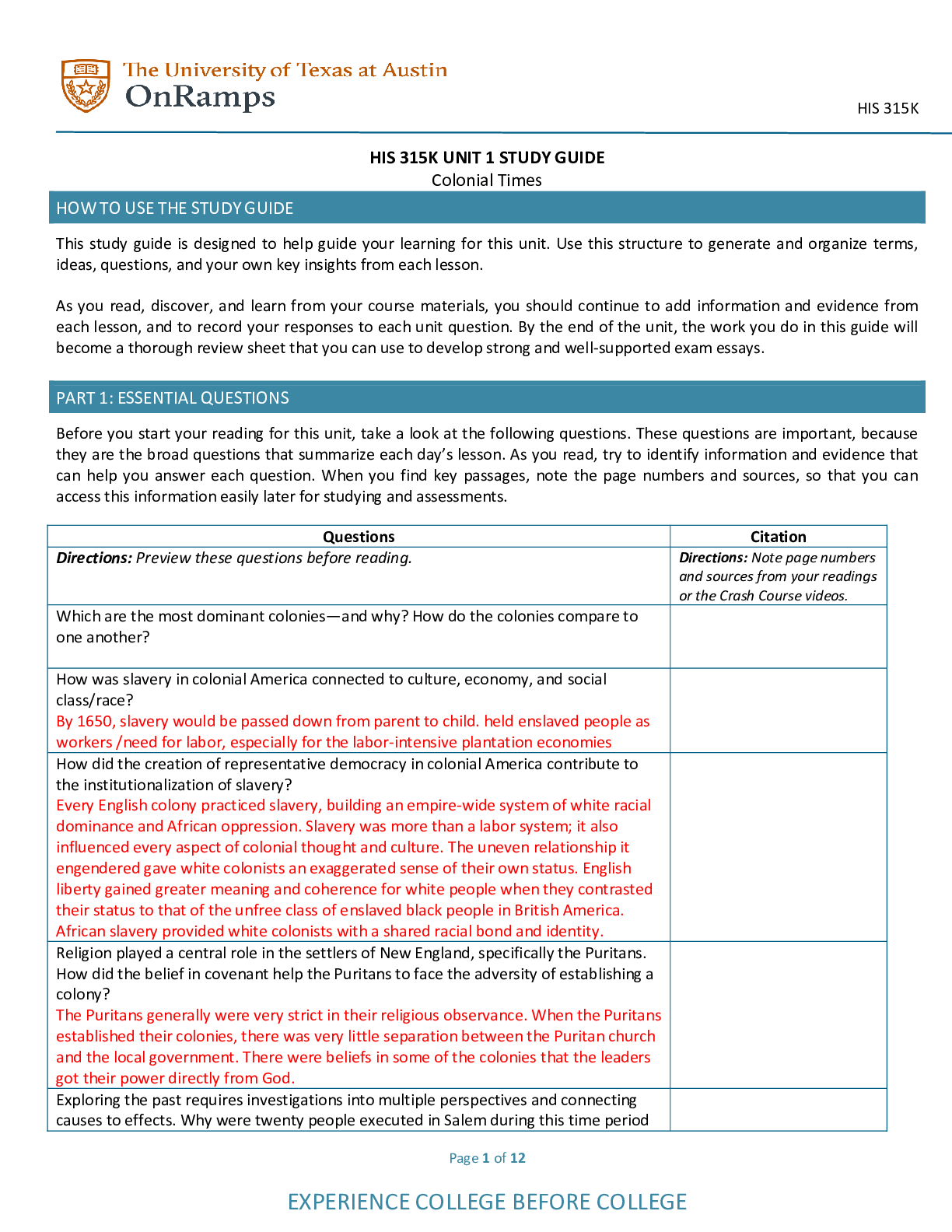
.png)

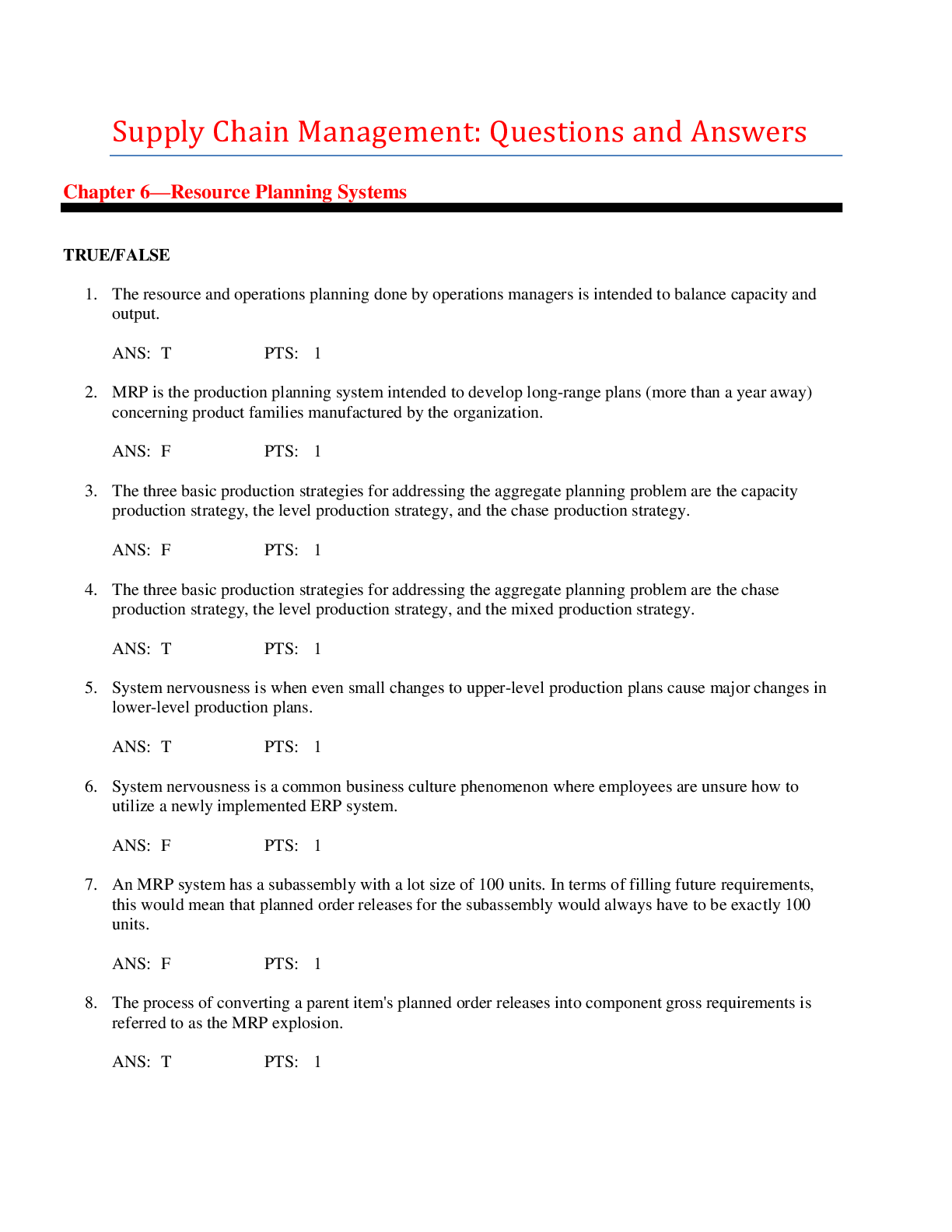
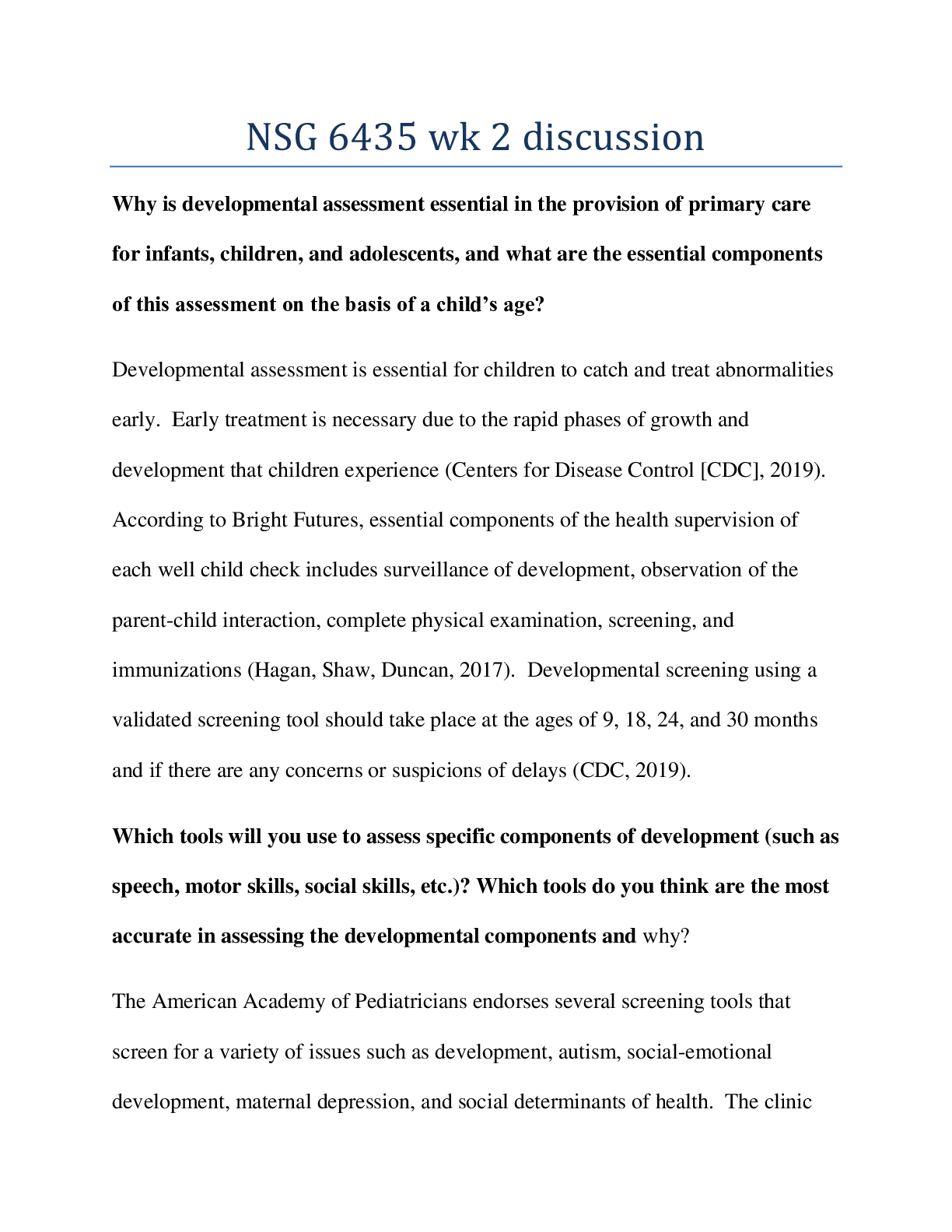
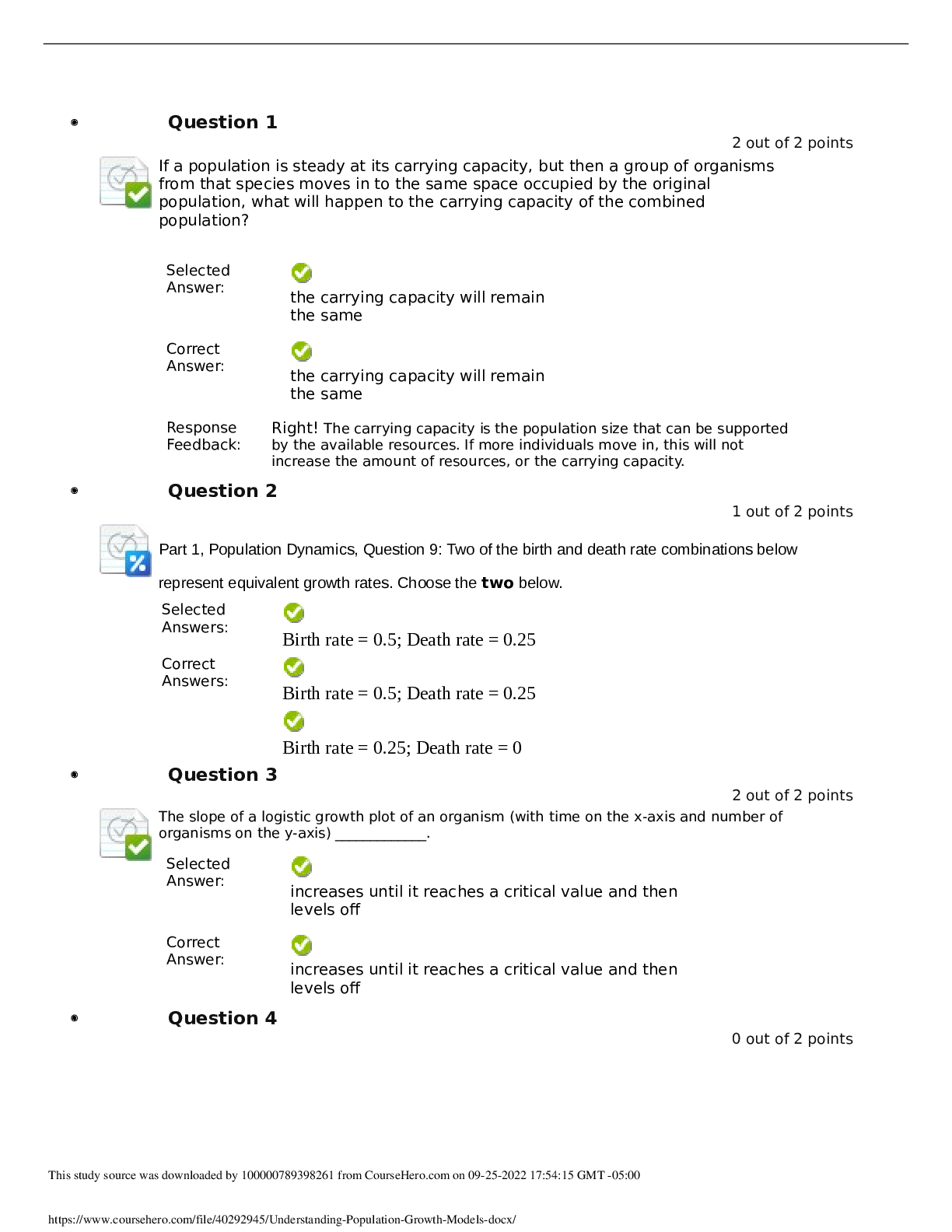
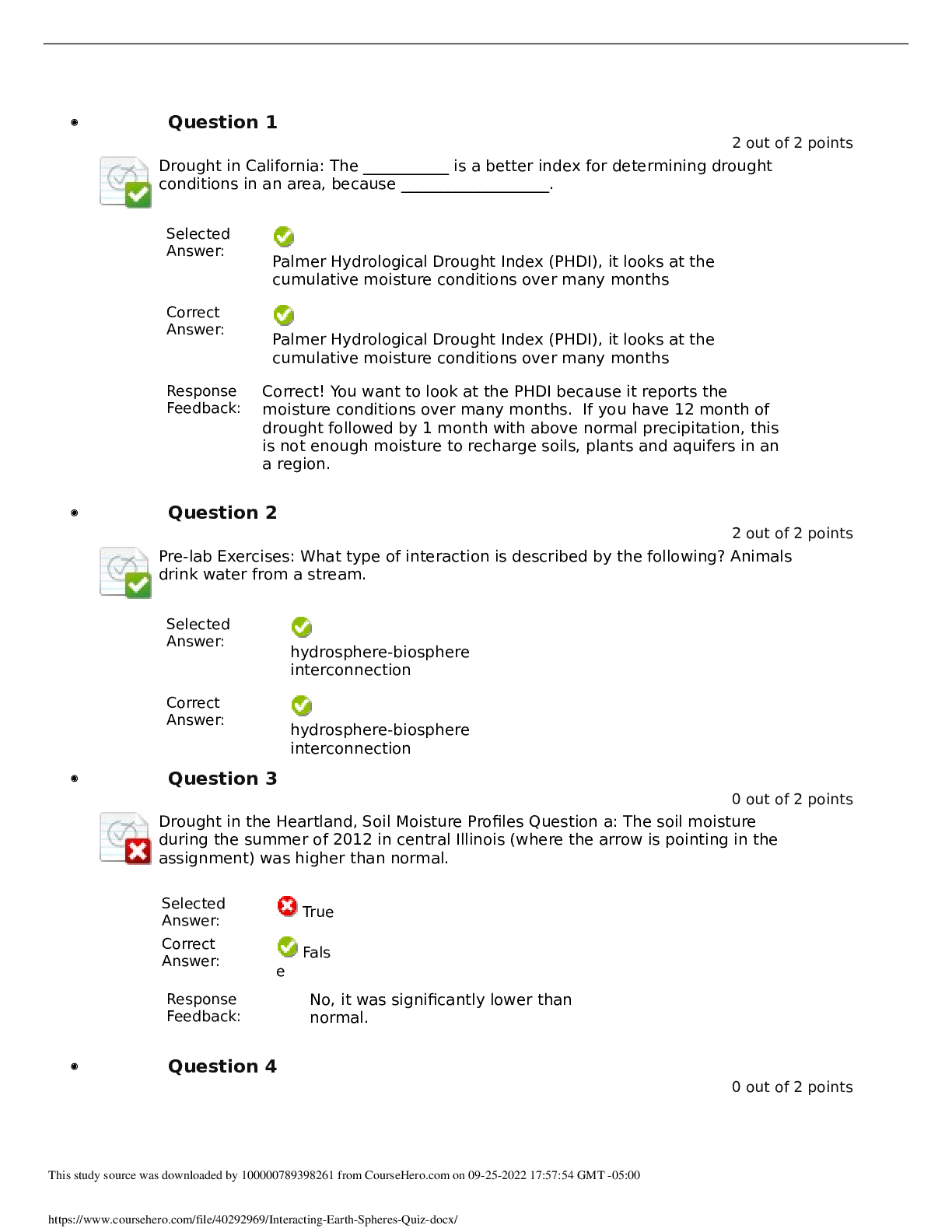
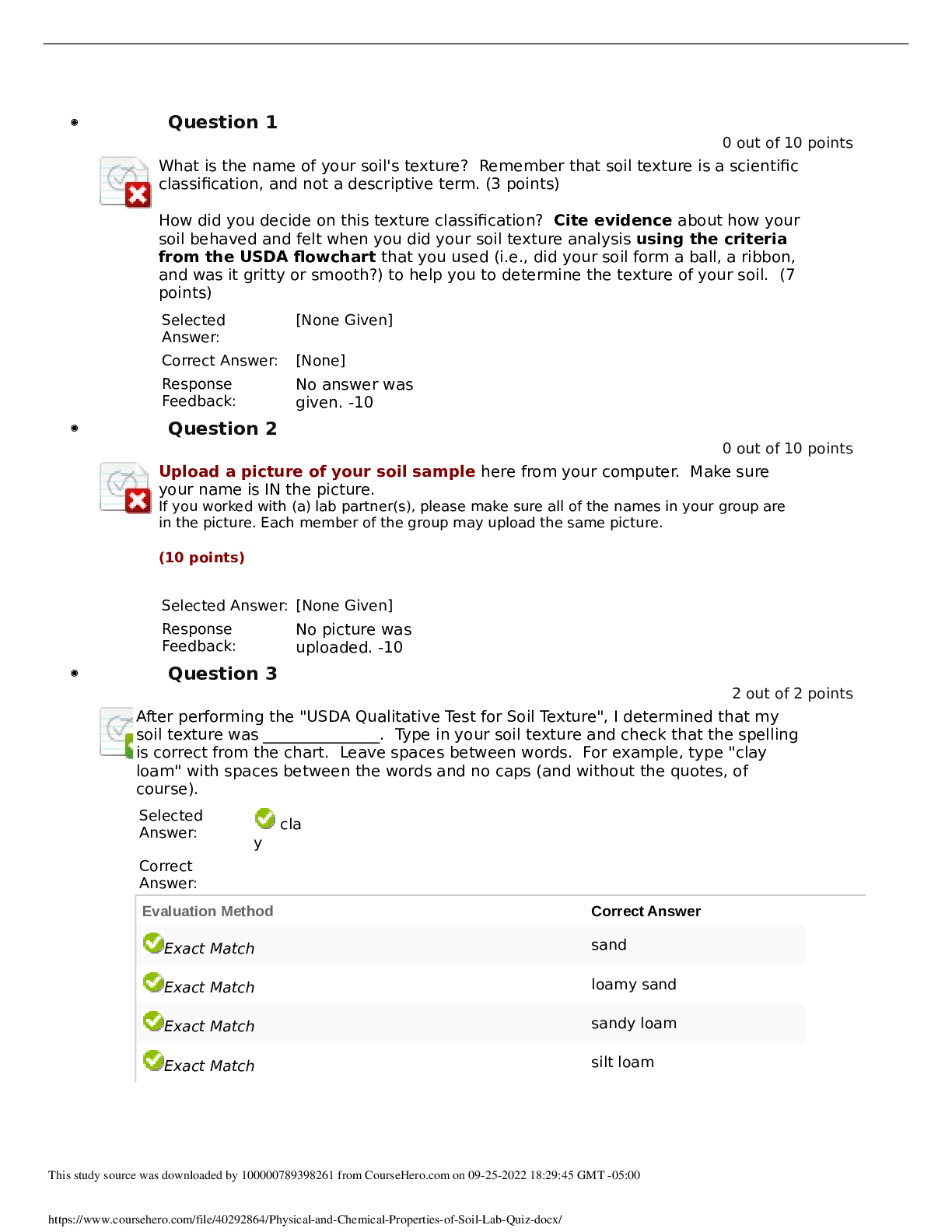
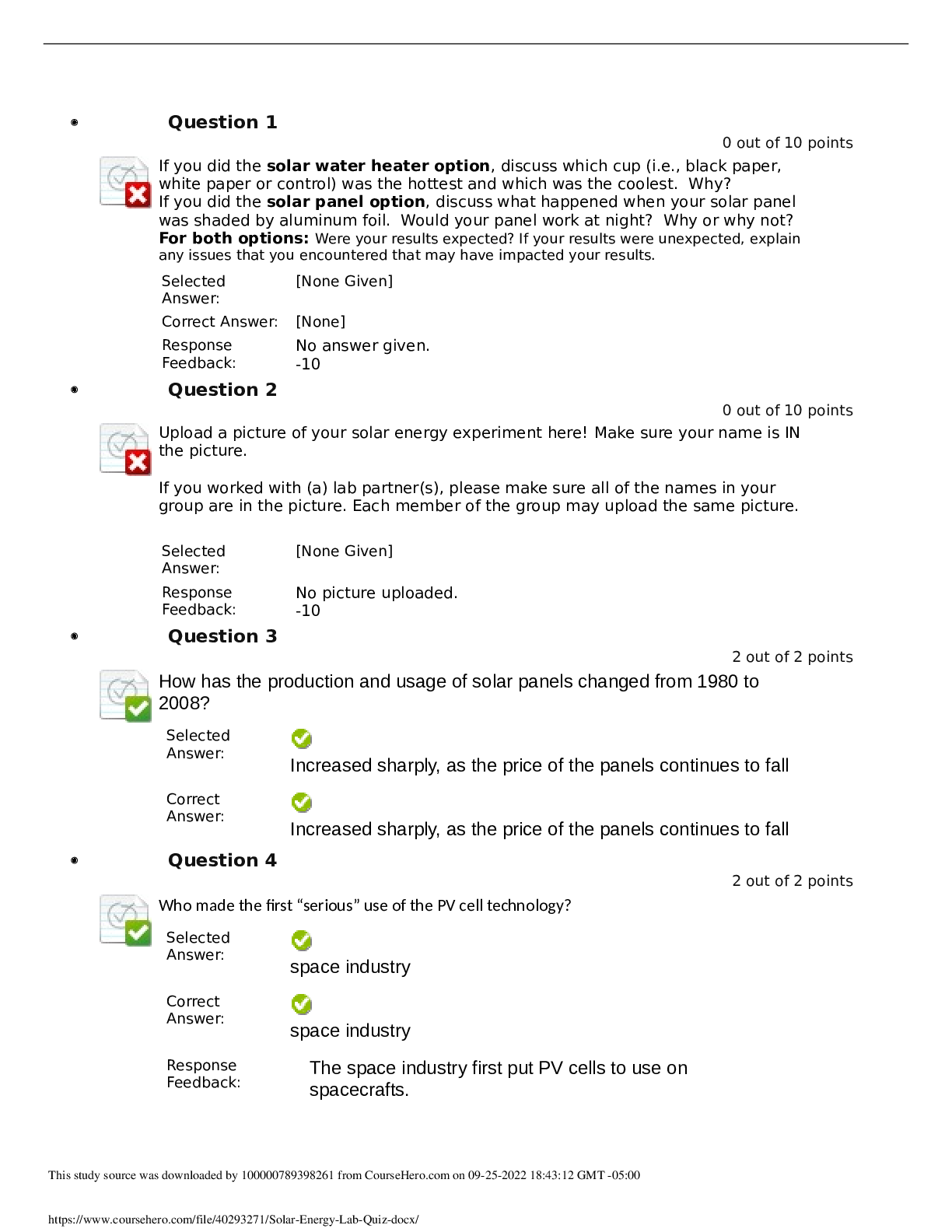
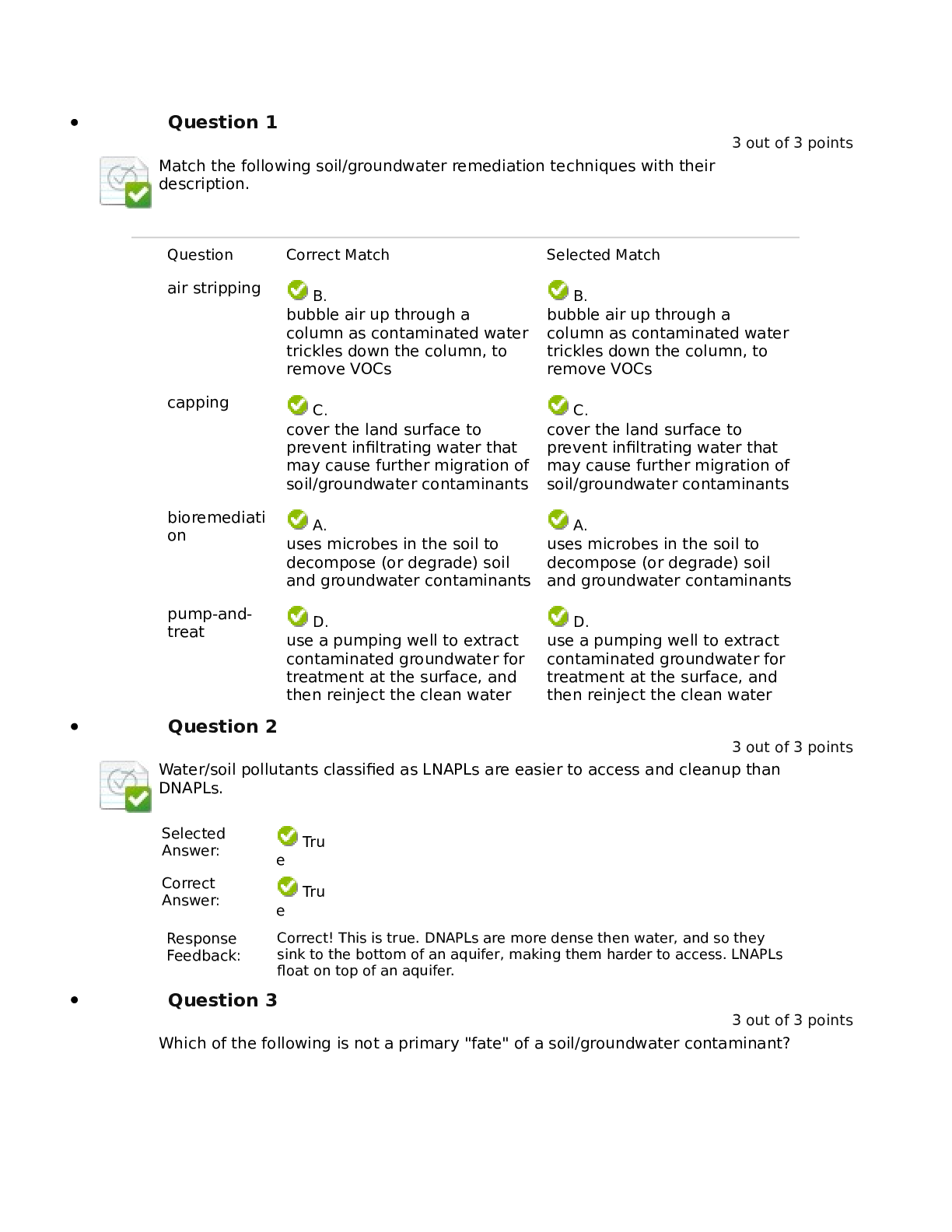
.png)

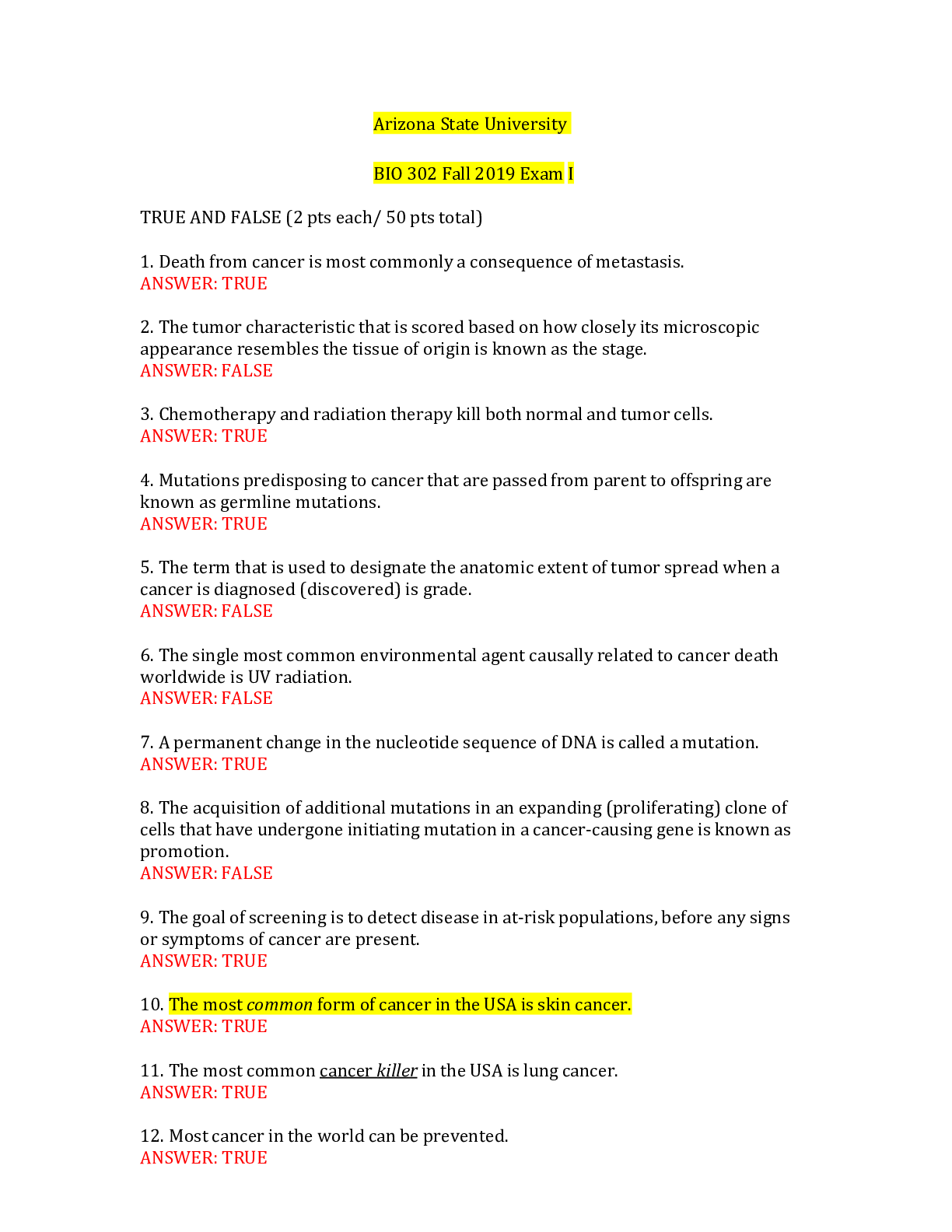
.png)

